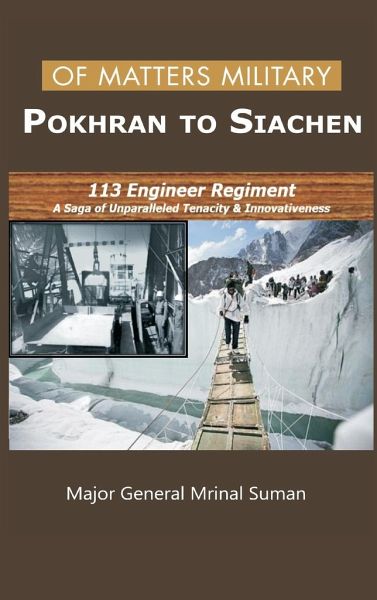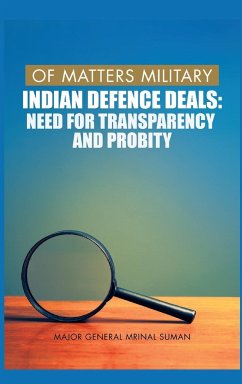
Of Matters Military - Pokhran to Siachen

PAYBACK Punkte
22 °P sammeln!
The designated role of an engineer regiment is to further the commander's plans by providing mobility to own forces by constructing bridges, tracks, helipads and breaching minefields; while denying the same to the enemy by creating obstacles such as laying mine-fields and demolition of bridges. However, the ground situation is entirely different. Engineer regiments are regularly called upon to undertake tasks that can only be termed as unusual. 113 Engineer Regiment was raised in Nagaland on 01 Apr 1967. In addition to taking part in counter-insurgency operations and Indo-Pak War 1971, the reg...
The designated role of an engineer regiment is to further the commander's plans by providing mobility to own forces by constructing bridges, tracks, helipads and breaching minefields; while denying the same to the enemy by creating obstacles such as laying mine-fields and demolition of bridges. However, the ground situation is entirely different. Engineer regiments are regularly called upon to undertake tasks that can only be termed as unusual. 113 Engineer Regiment was raised in Nagaland on 01 Apr 1967. In addition to taking part in counter-insurgency operations and Indo-Pak War 1971, the regiment has earned laurels in a multitude of aid to civil authority tasks. However, what sets this regiment apart are two unique achievements - sinking two deep shafts in Pokhran that facilitated India's entry into the exclusive thermo-nuclear club and provision of combat engineering support to operations in Siachen glacier with innovative expedients. This book is a chronicle of the indomitable spirit, tenacity and ingenuity of the one and only 113 Engineer Regiment.












